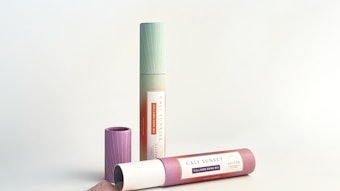After experiencing a sales dip of nearly 4% in 2009, the global market for salon hair care products has started to recover from the economic downturn. Following a series of successful new launches and product revamping, the segment has registered a positive gain in sales across all regional markets, with Latin America being the fastest growing region.
Among Latin American countries, Brazil's beauty industry went through significant transformation and expansion over the past decade, thanks to its rapid economic development. Brazilian beauty brand owners' sales reached approximately R$30 billion and grew approximately 10% in 2010, according to Factor de Solução/The Kline Group, building momentum to dominate the global beauty market. In practically all beauty product categories, Brazil stands between the second and fifth places in global rankings.
In a professional arena, however, specifically the salon hair care market, Brazil still lags behind.
Sitting in tenth position in global rankings, Brazil accounts for about 4% of the salon hair care global market, which indicates that this channel is being underused in Brazil as a specialized retail channel for hair care products. However, growth opportunities in this sector are significantly promising, and they are intimately linked to the demographic, social and economic profile of the Brazilian society. These factors are likely to bring about important changes in the profile of this segment, offering opportunities to those who dare to innovate.
Hair Coloring—The Category Winner
According to the newest report by Kline & Company, the salon hair care market in Brazil reached about B$700 million in 2010 at the manufacturers’ level, accounting for approximately 7% of total sales of hair care product sales in Brazil.
The hair coloring category—boosted by a rising number of consumers (men and women) who look for fashion-guided, color alternatives, as well as to cover gray hair—dominates the market with a share of 37%. Conditioners come in second place with a share of 32%, followed by shampoos with a 19% share. Sales of shampoos and conditioners as a package or so called "systems treatment" have been increasing.
As fashion has lately dictated a straight hair look and many Brazilian consumers have curly hair, straightening and perming is the fastest growing category, accounting for a 9% share of the market in 2010. A number of techniques and formula to straighten hair have popped up in recent years, many with claims to be harmless to the hair. On the other hand, perm products are slowly coming back, claiming to produce soft curls and bounce, which add charm and grace to the hair. Modeling/hold, finishing, leave-in products and sprays account for a 4% share in the Brazilian market. Use of products with the ability to shape hair (gels, wax and mousses), which are also included in this category, has been on the rise, mainly by men.
Hair Salons as Sales Channels
Nearly 80% of the sales of salon hair care products in Brazil account for products used in salons by professionals (also called "back-bar" sales); the other 20% are products sold by the beauty hair salon to their clients ("take-home" sales). Hair salons, as a consumer sales channel, is still a niche channel that needs to be better explored in Brazil. In the United States, on the other hand, the market is divided 50/50 between “take-home “and “back-bar” products. This difference is, in part, due to the profile of the Brazilian beauty hair salons market. In Brazil, the hair salon business is still, for the most part, the result of an economy of subsistence. Relatively speaking, very few salons are professional, licensed businesses, although this has been slowly changing.
It is estimated that there are around 400,000 beauty hair salons in Brazil, of which only between 120,000 and 150,000 are formal establishments. Most of the enterprises are very small, not very professional, and still in need of proper management and capital. They are focused on services, very rarely exploring the potential for selling products. In a survey conducted by Factor de Solução (the Latin American affiliate of The Kline Group ), hairdressers recognize that this is a latent opportunity, and they point out some impediment for the development of such policy:
- High price of products (when compared to those available in traditional retail channels);
- Inadequate portfolio to offer their clientele;
- Lack of training/qualification/experience of professional hairdressers to sell products;
- Lack of structure or adequate space to show products, among others.
Thus, the specialized retail of hair products in hair salons remains viable for only a small number of establishments (the more structured, professionalized and capitalized ones) that cater to customers with a higher buying power. Among such establishments, one can often find the famous hairdresser/celebrity stylist who change the way clients visit salons, and who are usually associated with commercial partners. However, even in such cases, it is still quite a small amount of businesses generated by sales of hair care products to customers, which barely reaches 30% of total sales.
On the other hand, the companies that manufacture such products for this segment, usually multinational companies of great size, still have not found economic and effective ways to support the development of the salon channel. The offerings of products/brands are still limited, and they are still perceived as having a point of difference when compared to the products sold in traditional retail. The communication efforts with consumers, training and support in sales techniques and management for entrepreneurs in this sector, and distribution and logistics are still lagging.
Demographic and Other Changes to Impact Salon Hair Care Market
According to Factor de Solução, the hair salon segment in Brazil will be positively affected by a series of demographic, social and economic factors that will boost growth, as well as the professionalization, of this sector. Oddly enough, Brazil is beginning to be an “old country.” In recent years, there has been a reduction in the birth rate; a change in the demographic profile of the Brazilian population. Brazil has never had such a concentration of population between the ages of 15 and 64 years old (ready to work; higher salaries; higher income). In 1990, around 60% of the Brazilian population (88.4 million) fell in this age group. In 2010, the percentage reached 67% (131 million inhabitants), and, in 2020, 71% of the population is expected to be in this age group (147 million consumers).
Additionally, Brazil is becoming be a country with more women than men, and these women will be more educated, wealthier and more independent. Women already account for 42.5% of the workforce in Brazil, and their income is becoming the equivalent of men's. According to the Brazilian Institute of Statistics and Geography (IBGE), the current salary of a woman professional in Brazil is equivalent to 71% of a man who has the same job. In 1993, the number barely reached 32%.
The number of women who support a family is also increasing. According to IBGE, from 2001 to 2009, the number of families supported by women in Brazil rose from approximately 27% to 35%. And when they do no support their families alone, they collaborate significantly with the family budget, notably in families with lower incomes. A recent study by Data Popular Market Research Institute shows that in higher income families, women are responsible for about 25% of the family income; at the bottom of the income pyramid, women's participation easily reaches 41%. As far as schooling is concerned, women, regardless of their position in the family, study longer on average, and those who support their families alone have the highest education.
This “new woman” (older, richer and more educated) taking her place in Brazilian society will be also more demanding, and will likely impact the profile of the Brazilian beauty market—boosting growth in categories of products with more aggregated value, as well as services that provide well being and convenience (where the professional segment will be of the utmost importance).
Opportunities for Brand Owners in the Brazilian Salon Segment
The array of existing opportunities in this market is enormous, and incorporates different sectors of the overall market and supply chain (services, salon professionals, suppliers of products, etc.).
Entrepreneurs interested in engaging in this sector should be aware of its trends and rising demands. Brand management/concept, relationship with customers, specialized and qualified professionals, incentive to innovation, good business rapport with suppliers, and development of a specialized retail niche are certainly key factors in determining success.
Sérgio Rebêlo is the managing director for Factor de Solução Consultoria e Participações Ltda, an affiliate company of The Kline Group—Latin America.










